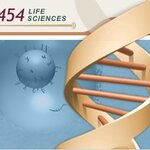Cancer Research

A CME (Coronal Mass Ejection) is a solar body slam to our high-tech civilization. CMEs begin when the sun launches a billion tons of electrically conducting gas (plasma) into space at millions of miles per hour. A CME cloud is laced with magnetic fields, and CMEs directed our way smash into Earth's magnetic field. If the CME magnetic fields have the correct orientation, they dump energy into Earth's magnetic field, causing magnetic storms. These storms can cause widespread blackouts by overloading power line equipment with extra electric current. But wait; there's more.
Some CMEs also bring…

In a fundamental discovery that someday may help cure type 1 diabetes by allowing people to grow their own insulin-producing cells for a damaged or defective pancreas, medical researchers here have reported that they have engineered adult stem cells derived from human umbilical cord blood to produce insulin.
Their paper cites six years of research and calls it "the first demonstration that human umbilical cord blood-derived stem cells can be engineered" to synthesize insulin.
"This discovery tells us that we have the potential to produce insulin from adult stem cells to help people with…

It's no secret that science is popular these days. I can't pick up a magazine or a newspaper without seeing an article dealing with science and how it impacts society. Global warming pieces are everywhere with scientists arguing about its causes or even if it exists. Some scientists argue about framing the debate for non-scientists while others think science is too important to be left up to people.
I read some politicians and they think they can fix every problem with regulation…

The vast majority of chemotherapy errors identified in children reach patients, according to one of the first epidemiological studies of cancer drug errors in children. Published in the July 1, 2007 issue of CANCER, a peer-reviewed journal of the American Cancer Society, the study concluded that the antimetabolite class of chemotherapeutic agents are most likely associated with errors, and that errors in drug administration and errors in drug dosing and frequency were the most common mistakes made and consequently, the most potentially harmful.
Chemotherapeutic drugs have been credited with…

A team led by Dana-Farber Cancer Institute scientists has developed a more human-like mouse model of cancer they say will aid the search for cancer-causing genes and improve the predictive value of laboratory drug testing.
Ronald A. DePinho, MD, of Dana-Farber has created mice that form tumors that are more genetically complex and unstable -- and therefore a better stand-in for human cancers -- than those of conventional genetically engineered mouse models of cancer. To characterize these mouse tumors, DePinho collaborated with Lynda Chin, MD, also at Dana-Farber, to perform high-resolution…

Coffee is a habit for more than 50 percent of Americans, who drink, on average, 2 cups per day. This widely consumed beverage is regularly investigated and debated for its impact on health conditions from breast cancer to heart disease. Among its complex effects on the body, coffee or its components have been linked to lower insulin and uric acid levels on a short-term basis or cross-sectionally. These and other mechanisms suggest that coffee consumption may affect the risk of gout, the most prevalent inflammatory arthritis in adult males.
To examine how coffee consumption might aggravate or…
Researchers at the Abramson Family Cancer Research Institute of the University of Pennsylvania and the Dana-Farber Cancer Institute describe in this week’s issue of Science a new candidate breast-cancer susceptibility gene. The Rap80 gene is required for the normal DNA-repair function of the well-known breast cancer gene BRCA1.
Upper panels: BRCA1 and Rap80 are recruited to the same structures at DNA damage sites in human cells treated with ionizing radiation. The merge panel is a digital overlay of the BRCA1 and Rap80 panels. Each circle represents a nucleus within one cell. Lower panels:…

Cells have the remarkable ability to keep track of their genetic contents and -- when things go wrong – to step in and repair the damage before cancer or another life-threatening condition develops.
But precisely how cells monitor the integrity of their genomes, identify problems, and intervene to repair broken or miscoded DNA has been one of nature's closely held secrets. Now, however, a report in the journal Science describes a new database developed by a team of researchers from the Howard Hughes Medical Institute at Harvard Medical School that is providing the first detailed portrait of…

I’ve recently decided to deepen my knowledge on the field of personalized genetics/genomics as it has an exceptional future in the realm of medicine (and business). And who is the right person to answer my geek questions? Of course, Steven Murphy, MD, the blogger of the Gene Sherpa. He is the Clinical Genetics Fellow at Yale University and is also the founder of a Personalized Medicine practice.
We’ve heard a lot about personalized medicine, but please tell us more about personalized genetics.
Sure. There are some fundamental differences here. When I think about personalized genetics (…

Two genes important for human development and implicated in cancer and schizophrenia also help keep a healthy balance between excitation and inhibition of brain cells, researchers say.
Neuregulin-1 and its receptor, ErbB4, promote inhibition at the site of inhibitory synapses in the brain by increasing release of GABA, a major inhibitory neurotransmitter, Medical College of Georgia researchers led by Dr. Lin Mei report in the May 24 issue of Neuron.
In 2000, a research team led by Dr. Mei showed that neuregulin-1 and ErbB4 also are at excitatory synapses, communication points between neurons…